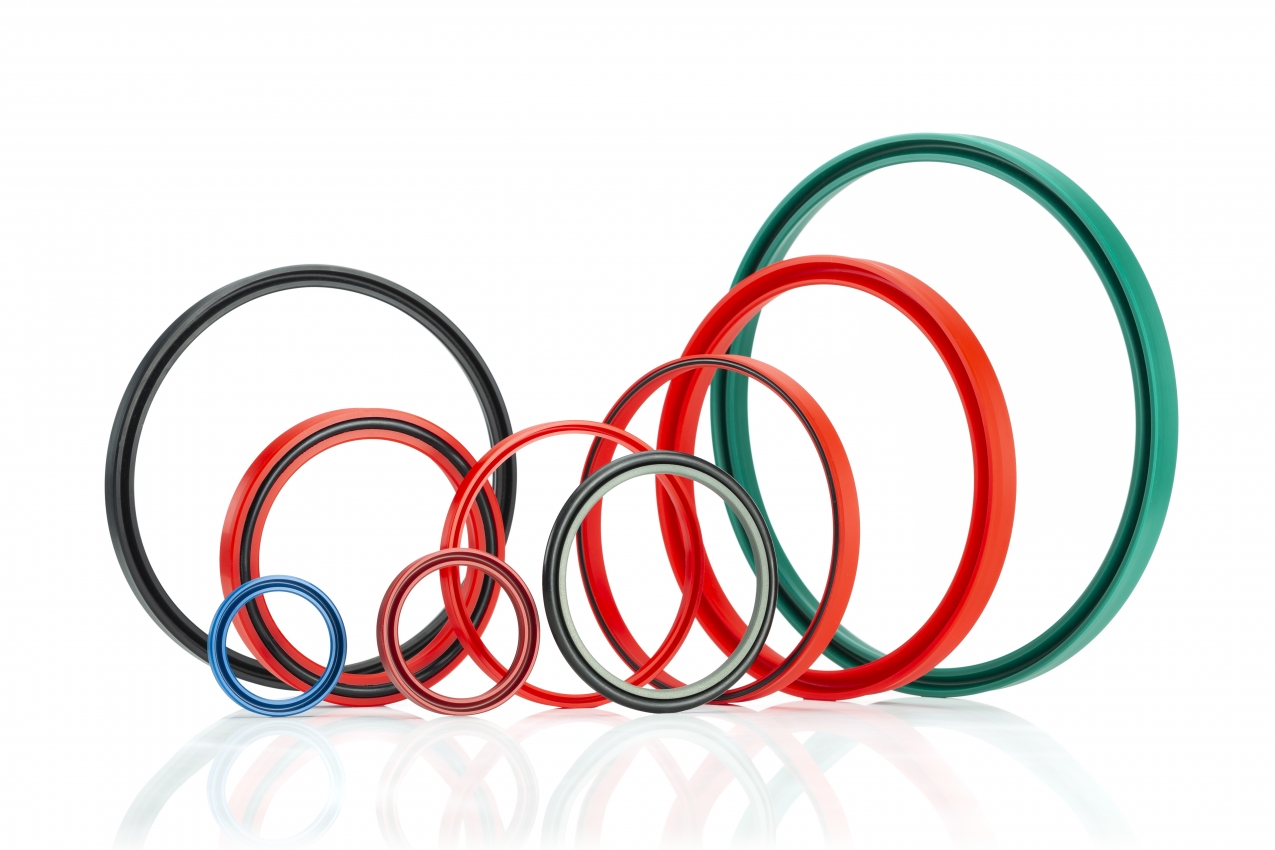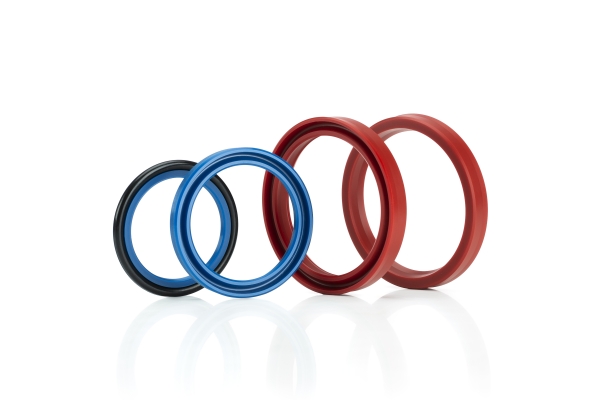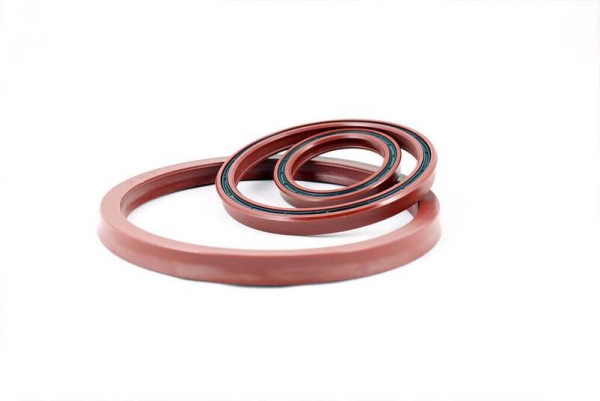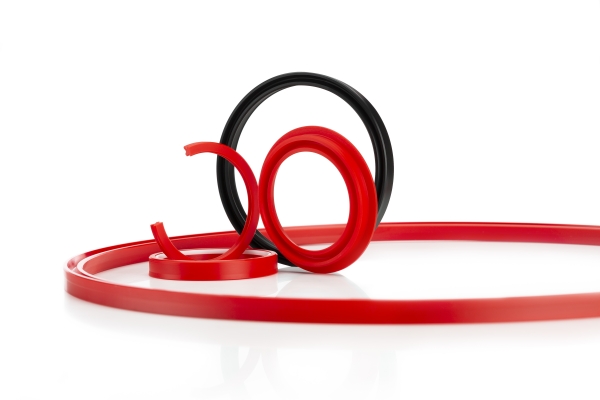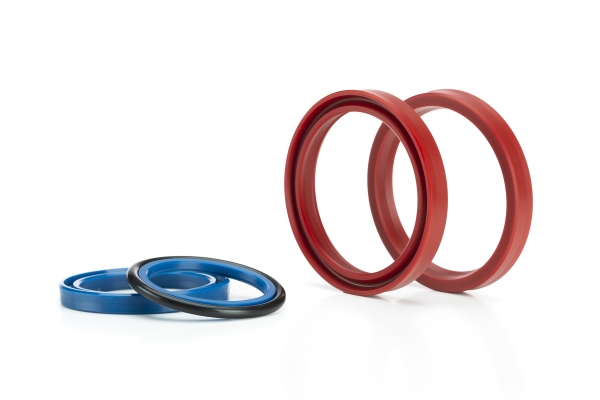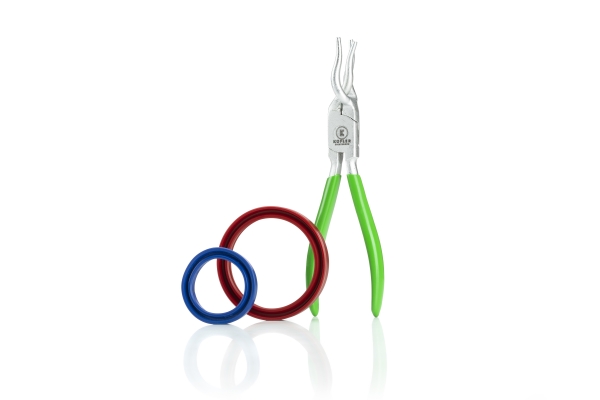-
Homepage
-
Seals and Gaskets
-
Standard Profiles
- Rod seals
Rod seal as a hydraulic seal - What exactly is it?
A rod seal provides sealing for a hydraulic cylinder on the rod side. These seals are internally sealing and are typically designed as groove rings, lip rings, or compact rings. The groove ring serves as both a primary and secondary seal. Rod seals are fitted within the housing or a cylinder screw connection, dynamically sealing the gap between the hydraulic cylinder and the piston rod.
Seals intended for industrial use must satisfy the highest standards of tightness, durability, and load capacity. Such industrial seals for hydraulic applications are often implemented as a sealing system consisting of multiple individual elements. This approach allows their advantages to be optimally utilized for specific applications. Hydraulic cylinders equipped with rod seals, for instance, find applications in workshop presses, with manufacturers like OMCN being notable examples. Do you have any questions?
Rod Seal and Piston Seal - What's the difference?
The rod seal has a different task than the piston seal, but must still complement each other.
The rod seal is permanently installed in the cylinder housing and provides a static seal on the cylinder side. It seals dynamically at the gap towards the movable piston rod. Rod seals therefore seal with their inner diameter. They are therefore referred to as internally sealing.
In contrast, piston seals are installed in the pistons themselves. A static seal is therefore provided on the piston side. On the cylinder side, the seal is dynamic. Piston seals therefore seal with their outer diameter. So they are externally sealing.
Various sealing sets for sealing piston rods can consist of the following sealing elements: a pressure ring, at least 3 sleeves and a support ring.
Buying Rod Seals - What types of rod seals are available?
You can buy rod seals online at Kofler - Dichtungen. The rod seal is available in various profiles and designs, depending on the requirements and area of application. As a seal manufacturer, we can produce and develop individual seals for you.
The hydraulic rod seal is typically a groove or lip ring, or a compact ring. The sealing lips can be symmetrically or asymmetrically shaped.
The exact geometry significantly influences the properties of the seal in terms of, for example, leakage rate, operating temperature, operating conditions and operating pressure (in combination with the material of which the rod seal is made).
If a high static tightness with low friction and without system pressure is also necessary, prestressed seals are used. In this case, a component used as a prestressing element (e.g. a stainless steel spring or an elastomeric O-ring) presses the sealing lips apart and presses them against the sealing surfaces.
In pneumatics, the higher sliding friction makes different demands on the rod seal. Special geometries solve the problems that arise.
Ordering rod seal materials from the seal manufacturer
The different materials for rod seals can be easily ordered from us, as seal manufacturer. Rod seals are designed to withstand high mechanical stresses and be resistant to hydraulic media. Examples of materials used in contemporary seals include: - PU (Polyurethane) - Various PTFE seals with PTFE compounds (Polytetrafluoroethylene, PTFE-Bronze) - NBR seals (Nitrile Butadiene Rubber).
These materials offer a broad spectrum of hardness, pressure resistance, temperature resistance, chemical resistance, and elasticity. This allows for the custom manufacturing of specialty seals and standard seals tailored to specific application areas. Additionally, there are many other materials and combinations thereof that cater to a wide range of requirements. The possibilities for combining different types and materials of seals are numerous. As experts in sealing technology, we are eager to provide consultation.
We gladly manufacture the appropriate rod seals to meet your specific needs. You can add various sealing elements, roof sleeves, PTFE seals, wipers, piston seals, and single-acting rod seals to your shopping cart online and place your order. We also offer a range of hydraulic and pneumatic seals or can produce custom designs upon request.
Mounting the rod seal correctly - tips from the seal manufacturer
As with any seal, the assembly of a rod seal depends on the respective design.
Here you will find important tips from the seal manufacturer Kofler - Dichtungen.
Rod seal installation instructions
For the installation of a rod seal, a test and possible preparation of the installation space is particularly important.
Ensure surfaces are clean and free of dirt and dust. Sharp edges or burrs must be removed before assembly. These can damage your seals.

Installing the grooved ring
Groove rings can usually be installed in the cylinder by simply compressing them. For this, hold the seal between your thumb, index, and middle finger. Push the part of the seal resting on your thumb between the other two fingers.
This reduces the circumference of the seal, allowing it to be easily inserted into the installation space. Generally, we recommend using our assembly pliers for installation, which are suitable for rod seals starting from 25 mm (0,98 in) diameter. Below, you will find a video for the easy and speedy assembly of a rod seal.
Seal rings with slide bearings are mounted in a manner similar to groove rings. However, the O-ring must be placed in the groove beforehand. Moreover, the PTFE seal ring should not be overstretched to avoid irreparable damage to the seal. For these, we also recommend installation using our assembly pliers.
ALL the profiles mentioned below are available in ALL sizes (DIN ISO number) and materials from 4 mm to 2,500 mm (0,15 in to 98,42 in). You can also easily place your order through our online shop, including shipping costs.

